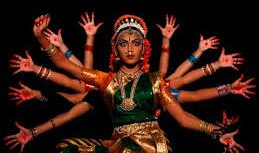 Sattriya
Sattriya
Sattriya (Assamese: সত্ৰীয়া), or Sattriya Nritya, is a major Indian classical dance. It is a dance-drama performance art with origins in the Krishna-centered Vaishnavism monasteries of Assam, and attributed to the 15th century Bhakti movement scholar and saint named Srimanta Sankardev.
One-act plays of Sattriya are called Ankiya Nat, which combine the aesthetic and the religious through a ballad, dance and drama.The plays are usually performed in the dance community halls (namghar) of monastery temples (sattras). The themes played relate to Krishna and Radha, sometimes other Vishnu avatars such as Rama and Sita.
Recognized in 2000 as a classical dance by Sangeet Natak Akademi of India, modern Sattriya explores many themes and plays, and its performances staged worldwide.
Sattriya
The Sattriya dance form was introduced in the 15th century A.D by the great Vaishnava saint and reformer of Assam, Mahapurusha Sankaradeva as a powerful medium for propagation of the Vaishnava faith. The dance form evolved and expanded as a distinctive style of dance later on. This neo-Vaishnava treasure of Assamese dance and drama has been, for centuries, nurtured and preserved with great commitment by the Sattras i.e. Vaishnava maths or monasteries. Because of its religious character and association with the Sattras, this dance style has been aptly named Sattriya.
Sankaradeva introduced this dance form by incorporating different elements from various treatises, local folk dances with his own rare outlook. There were two dance forms prevalent in Assam before the neo-Vaishnava movement such as Ojapali and Devadasi with many classical elements. Two varieties of Ojapali dances are still prevalent in Assam i.e. Sukananni or Maroi Goa Ojah and Vyah Goa Ojah. Sukananni Oja paali is of Sakti cult and Vyah Goa Oja paali is of Vaishnava cult. Sankaradeva included Vyah Goa Ojah into his daily rituals in Sattra. Till now Vyah Goa Ojah is a part of rituals of the Sattras of Assam. The dancers in a Oja paali chorus not only sing and dance but also explain the narration by gestures and stylized movements. As far as Devadasi dance is concerned, resemblance of a good number of rhythmic syllables and dance postures along with footwork with Sattriya dance is a clear indication of the influence of the former on the latter. Other visible influences on Sattriya dance are those from Assamese folk dances namely Bihu, Bodos etc. Many hand gestures and rhythmic syllables are strikingly similar in these dance forms.
Dancers dancing with drums and cymbals
Sattriya dance tradition is governed by strictly laid down principles in respect of hastamudras, footworks, aharyas, music etc. This tradition, has two distinctly separate streams – the Bhaona-related repertoire starting from the Gayan-Bhayanar Nach to the Kharmanar Nach, secondly the dance numbers which are independent, such as Chali, Rajagharia Chali, Jhumura, Nadu Bhangi etc. Among them the Chali is characterized by gracefulness and elegance, while the Jhumura is marked by vigor and majestic beauty.
Assam is a land known for its animated colors, rich history and a culture which is basically a hybrid of many different traditions and values. Assamese ethnicity is extremely popular when it comes to different handicrafts and visual arts, namely dance. The Sattriya dance, which is a prehistoric Indian classical dance form, is amongst the 8 most renowned Indian traditional dances. The perfectly executed hand movements, bright and dramatic colored sarees, exuberant expressions and a sense of gaiety that creates a halo around this dance makes it nothing less of a visual treat for the spectators.The one feature of this dance which stands out is the costume and the entire ensemble that looks like a unification of various colors that all interlock together and form a unique and distinct style which exhibits Assamese grandeur and cultural legacy.
Sattriya Dance by Ramkrishna Talukdar
Assam Silk Sarees are extremely popular, not only in Assam but throughout India and abroad. The subtle sheen and fine Silk threads are woven to form exquisite designs and motifs that are individualistic and diverse in style. The Sattriya dancers opt for these Silk sarees when putting together their dance attire. Pat Silk and Muga Silk are the two kinds of sarees used by the dancers. The reason Pat Silk sarees are so popular with this dance form is because of the various local motifs used, which represent the flora and fauna found in Assam.
A large red bindi on the forehead, dark kohled eyes stretched to form dramatic looking eyes, red or coral colored lips and flowers to adorn the hair are some of the basic embellishments used in addition to the rich looking Assamese Silk sarees worn by the dancers. A mix of Gold and Silver jewelry is used, which forms a head gear, waist belt, earrings and heavy neckpieces.
One step of Sattriya Dance
The Sattriya has gained immense popularity in the department of visual arts, not only in India but also in countries like U.S. and U.K., where the importance of Assamese culture has gained new ground in the last several years. Alongside the beautiful dance form, the Assamese jewellery designs and Silk sarees have also gained popularity across the globe. Usha Rani Baishya, who is a popular Sattriya expert across Assam, has graced this age old dance technique in several shows which have also strengthened the popularity of this dance style.
